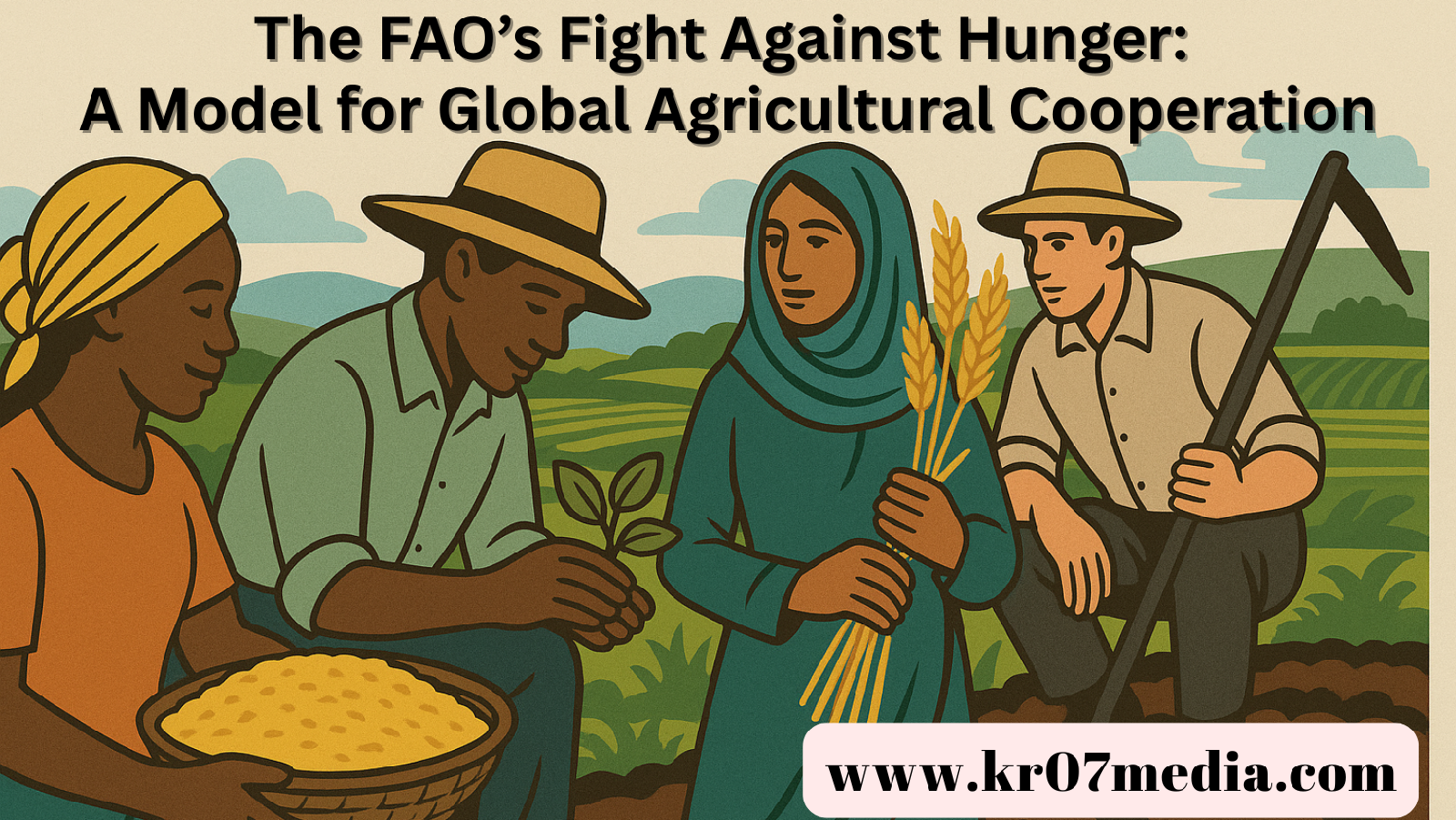The Food and Agriculture Organization (FAO) of the United Nations, founded in 1945, has stood at the forefront of the global battle against hunger and malnutrition for nearly eight decades. With a mission to achieve food security for all and ensure that people have regular access to enough high-quality food to lead active, healthy lives, the FAO’s work has become increasingly critical in the face of global challenges such as climate change, geopolitical instability, and growing population pressures. The FAO's multifaceted approach — from supporting sustainable agriculture to promoting inclusive rural development — presents a model of global cooperation that nations can emulate and strengthen for future resilience.
A Global Mandate with Local Impact
The FAO’s strategy centers around the principle that hunger is not just a problem of food production, but one of distribution, access, and sustainability. This insight has led the FAO to implement programs that address systemic issues in food systems, while tailoring interventions to the specific needs of member states. Through technical support, policy advice, and capacity-building initiatives, the FAO empowers countries to develop their own food and agricultural strategies that align with broader global goals, such as the UN’s Sustainable Development Goals (SDGs), particularly SDG 2: Zero Hunger.
Building Resilience Through Innovation
One of the FAO’s most significant contributions has been its focus on agricultural innovation and sustainable intensification. The organization champions climate-smart agriculture — practices that increase productivity, enhance resilience to climate shocks, and reduce greenhouse gas emissions. By facilitating the sharing of agricultural technologies, drought-resistant crop varieties, and soil conservation techniques, the FAO promotes knowledge exchange between nations, thereby transforming the agricultural sector into a more cooperative, resilient system.
Moreover, FAO’s investment in digital agriculture — including satellite-based early warning systems for drought and pest outbreaks, mobile apps for farmers, and blockchain applications for supply chain transparency — illustrates its forward-thinking approach to global food challenges.
Emergency Response and Crisis Mitigation
In times of conflict or natural disaster, the FAO plays a pivotal role in humanitarian assistance. It provides emergency aid in the form of seeds, tools, and livestock support, while simultaneously working to restore and strengthen food systems in the wake of crises. Its collaboration with the World Food Programme (WFP) in conflict zones such as South Sudan, Syria, and Yemen is a testament to the power of inter-agency cooperation in saving lives and rebuilding communities.
The FAO also leads the Global Information and Early Warning System (GIEWS), which monitors food supply and demand trends around the world. This helps prevent food crises by allowing governments and aid organizations to respond proactively rather than reactively.
Championing Agroecology and Biodiversity
The FAO’s support for agroecological approaches — farming methods that work with nature rather than against it — showcases its commitment to environmental sustainability. It encourages practices that preserve biodiversity, maintain healthy ecosystems, and improve the livelihoods of smallholder farmers. Recognizing that 80% of the world’s food is produced by small-scale farmers, the FAO advocates policies that protect their rights, provide access to land and resources, and promote fair trade.
Initiatives such as the Globally Important Agricultural Heritage Systems (GIAHS) program recognize and preserve traditional farming knowledge, which often holds solutions to modern agricultural challenges.
Inclusive and Gender-Sensitive Development
A key aspect of the FAO’s model is its focus on inclusivity. The organization has long emphasized the importance of gender equality in agricultural development. Women constitute nearly half of the agricultural labor force in many developing countries, yet they often lack access to resources, credit, and education. FAO-supported projects aim to close these gaps through targeted training, legal reforms, and community outreach, empowering women as agents of change in food production and nutrition.
The FAO also champions youth engagement in agriculture through education, entrepreneurship, and innovation platforms, recognizing that a new generation of farmers and agri-preneurs is essential to future food security.
A Platform for Global Dialogue and Cooperation
Perhaps most importantly, the FAO serves as a convening body, bringing together governments, NGOs, private sector actors, and civil society to collaborate on agricultural policy, research, and development. Through annual conferences, regional meetings, and technical committees, the FAO fosters a culture of cooperation and shared responsibility. Instruments like the Code of Conduct for Responsible Fisheries and the Voluntary Guidelines on the Responsible Governance of Tenure of Land exemplify how international norms and standards can emerge from inclusive dialogue.
The Road Ahead: Challenges and Opportunities
Despite its successes, the FAO faces formidable challenges. Climate change continues to threaten agricultural productivity and food supply chains. Conflicts and forced migrations strain food systems. Meanwhile, rising inequality and inflation exacerbate food insecurity, especially in the Global South.
To overcome these challenges, the FAO will need to deepen its partnerships, enhance funding mechanisms, and leverage data and technology more effectively. Multilateral cooperation — with regional bodies like the African Union and ASEAN, development banks, and the private sector — must be prioritized. There is also a growing need for greater political will among member states to implement bold agricultural reforms and commit to long-term food system transformation.
Conclusion
The FAO’s fight against hunger is far more than a humanitarian mission; it is a blueprint for how nations can work together to address one of humanity’s most fundamental needs. By promoting sustainable agriculture, fostering innovation, supporting vulnerable communities, and encouraging inclusive development, the FAO has positioned itself as a model of global agricultural cooperation. As the world navigates the complexities of the 21st century, this model offers hope — and a practical path forward — in the pursuit of a world free from hunger.



